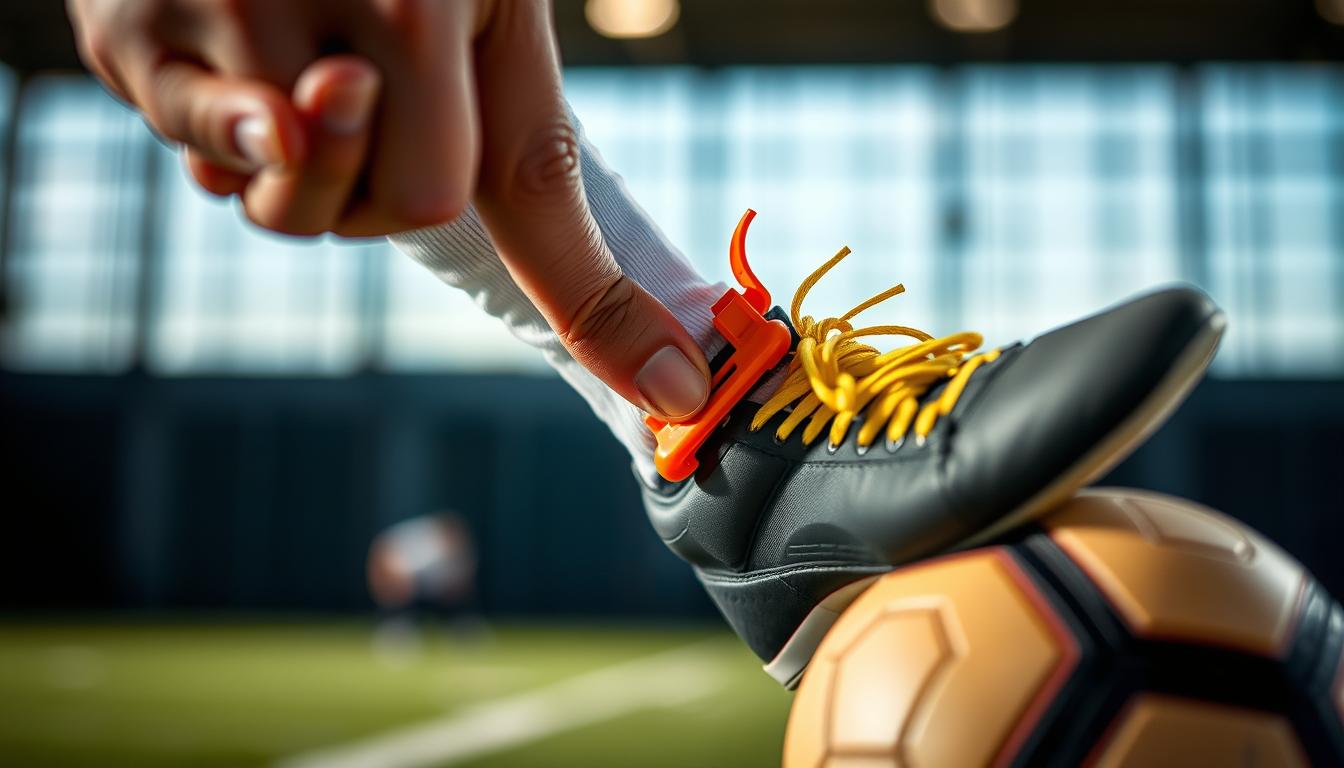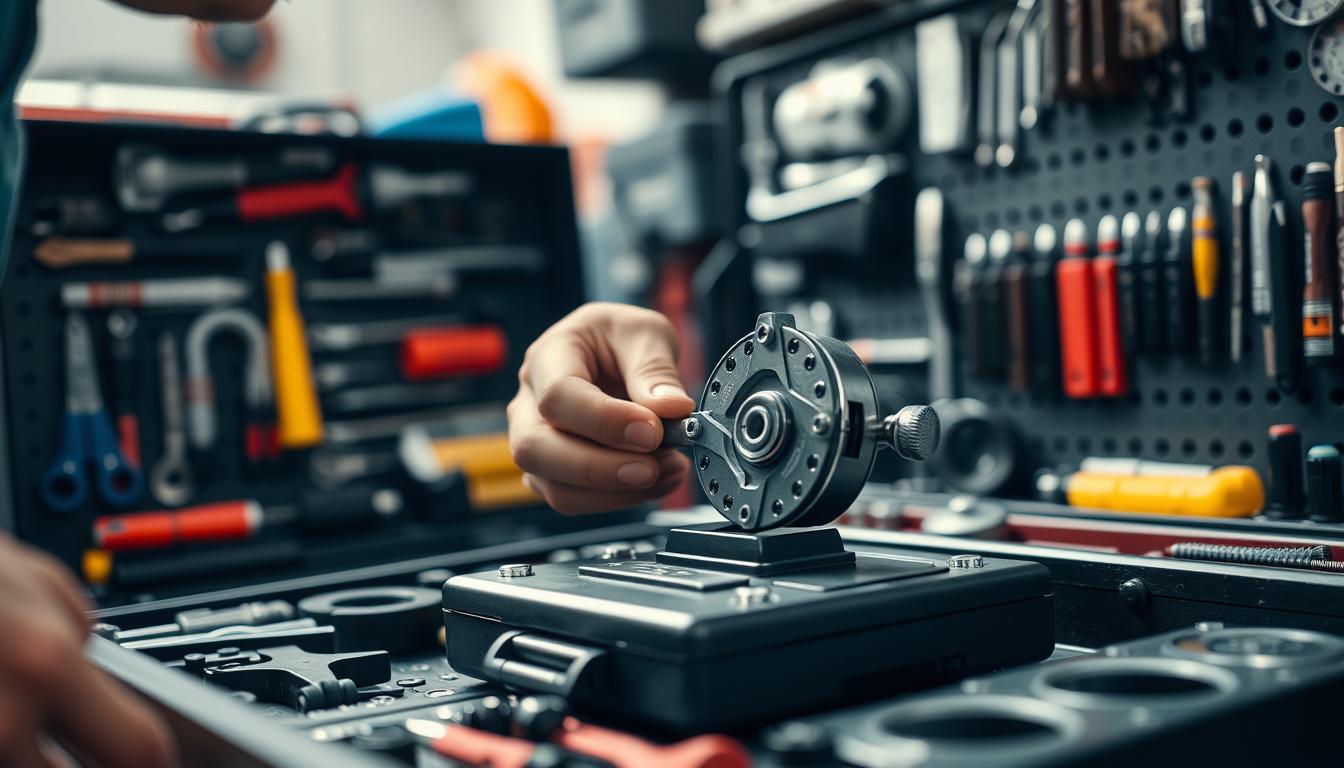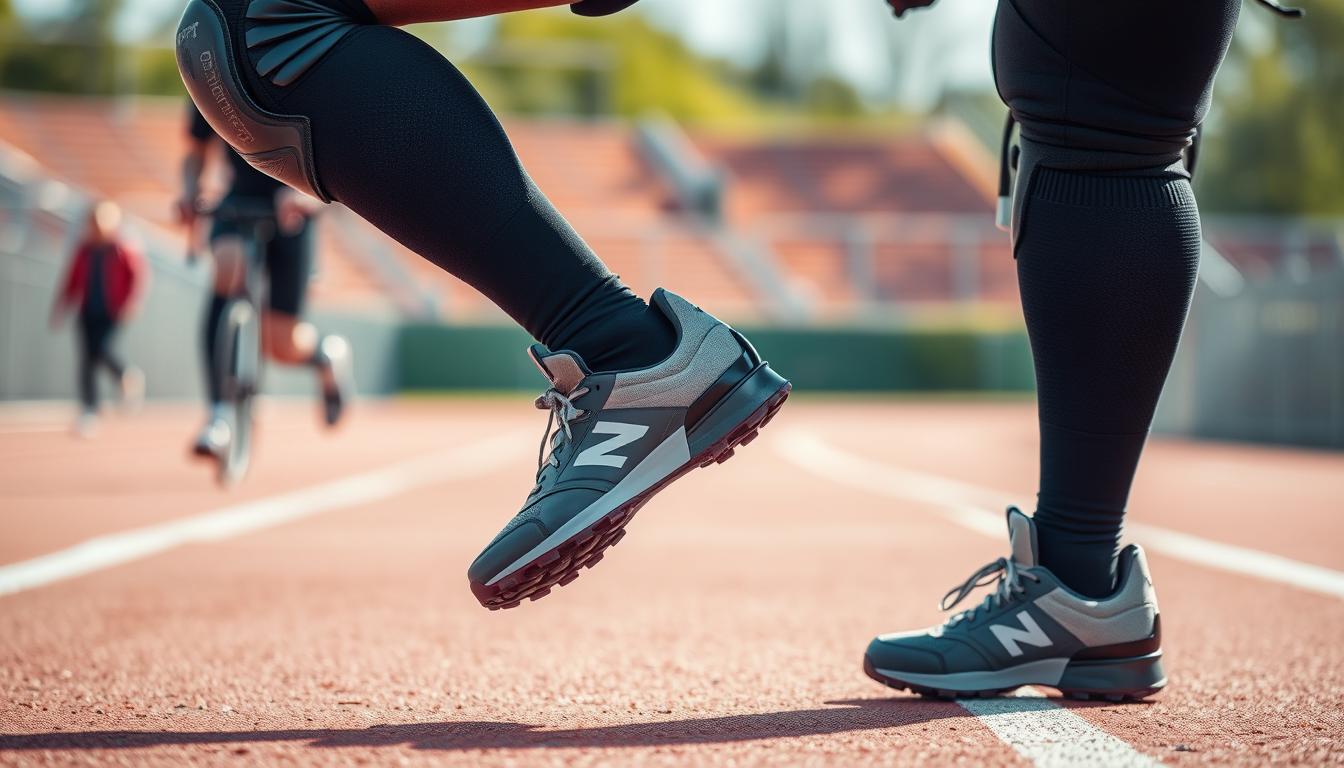Clipping on a kick drum can boost your music production skills. It’s a powerful tool for both new and experienced drummers. This guide will teach you how to use a clip-on kick drum effectively.
A clip-on kick can improve your drumming performance and sound quality. We’ll cover the basics of installing and using this tool. By the end, you’ll be ready to add it to your musical toolkit.
Key Takeaways
- Understand the purpose and benefits of using a clip-on kick drum
- Learn the proper steps for preparing and installing a clip-on kick
- Discover techniques for adjusting the tension and angle of the clip-on kick
- Explore maintenance and troubleshooting tips to keep your clip-on kick in top shape
- Gain insights into incorporating clip-on kicks into your drumming routine
Understanding the Clip On Kick
A clip-on kick is a popular percussion accessory for drummers and producers. It allows quick adjustments to the kick drum’s sound and position. This tool enhances performance and recording in several ways.
What is a Clip On Kick?
A clip-on kick attaches directly to the kick drum. It’s an alternative to traditional mounted setups. These devices are portable, perfect for live shows and studio recordings.
Clip-on kicks work well for drum setups that need frequent changes. They’re designed for easy use and quick adjustments.
Benefits of Using a Clip On Kick
- Improved portability: Clip-on kicks are lighter and more compact. Drummers can easily transport and set up their gear.
- Enhanced versatility: Drummers can quickly experiment with different sound variations. They can adjust position, angle, and tension for the perfect tone.
- Ease of use: These kicks are user-friendly. Drummers can attach, adjust, and remove them quickly.
- Consistent sound: Clip-on kicks provide secure attachment to the drum. This helps maintain desired sound and performance during shows or recordings.
The clip-on kick is a valuable tool for drummers and producers. It offers a versatile way to enhance kick drum sound and performance.
Both pros and beginners can benefit from this accessory. It can be a game-changer in your musical journey.
Preparing for Kick Installation
Proper drum setup is crucial before installing a clip-on kick. This ensures a secure attachment of your new device. Let’s explore key considerations for this process.
A well-prepared drum makes for a smooth installation. It sets the stage for enjoying your new clip-on kick with confidence.
- Clean the Drum Surface: Thoroughly clean the mounting area on your drum. Use a gentle solution and soft cloth to remove dirt and residue. This helps the attachment adhere securely.
- Identify the Ideal Mounting Location: Examine your drum to find the best spot for installation. Consider accessibility, stability, and how it affects your kit’s overall look.
- Gather the Necessary Tools and Hardware: Have all required tools and hardware ready before starting. This may include a screwdriver, wrench, and any specialized mounting hardware.
Taking time to prepare ensures a successful attachment process. With proper preparation, you’ll be ready to enjoy your new clip-on kick.
“Preparation is the key to success when it comes to installing a clip-on kick.”
Choosing the Right Clip On Kick
Finding the perfect clip-on kick for your drum kit requires careful consideration. Several factors play a crucial role in this decision. Let’s explore the types of clip-on kicks and key factors to consider.
Types of Clip On Kicks
Clip-on kicks come in various styles, each with unique features. Here are some common types:
- Spring-loaded clip-on kicks: These feature a spring-loaded mechanism that attaches securely to the kick drum hoop.
- Screw-on clip-on kicks: These require the user to screw the kick into the drum hoop for a more permanent attachment.
- Mallet-activated clip-on kicks: These are designed to be triggered by the impact of the mallet, creating a unique percussive sound.
- Wireless clip-on kicks: These eliminate the need for cables, providing greater freedom of movement during your performance.
Factors to Consider When Selecting
When choosing a clip-on kick, keep these important factors in mind:
- Drum Size and Type: Ensure the clip-on kick is compatible with the size and style of your kick drum.
- Adjustability: Look for a clip-on kick that offers adjustable features, such as tension and angle, to customize the sound and positioning.
- Sound Quality: Consider the overall sound and tonal characteristics of the clip-on kick to ensure it complements your drumming style.
- Durability: Choose a clip-on kick that is built to withstand the rigors of live performances and rehearsals.
- Ease of Use: Opt for a clip-on kick that is straightforward to install and adjust, saving you time and hassle.
These factors will guide you towards the ideal clip-on kick. Your choice can greatly enhance your drumming experience. It can also help you achieve your desired sound.
Step-by-Step Guide to Installing a Clip On Kick
Installing a clip-on kick requires careful attachment and adjustment. This guide will help you secure and position your device effectively. Follow these steps for the best sound and performance.
Attaching the Clip On Kick
- Find the right mounting spot on your drum. Look for the rim or shell, based on your kick’s design.
- Place the clip-on kick where you want it. Make sure it lines up with the drum head.
- Tighten the clamp or screw to secure it. Be gentle to avoid damaging the drum.
- Check that the kick is stable and doesn’t move during play.
Adjusting the Tension and Angle
After attaching the kick, it’s time to fine-tune it. This step ensures optimal performance.
- Locate the adjustable parts like the tension spring or angle knob.
- Adjust the tension for the right response. Make sure the kick stays stable.
- Set the kick’s angle to match your playing style. Aim for a comfortable striking motion.
- Try different settings to find your perfect kick sound and feel.

These steps will help you install your clip-on kick successfully. Take your time and test thoroughly. This ensures your new kick fits seamlessly into your drumming setup.
How to Clip On Kick
Clipping on a kick drum needs a specific technique. Proper positioning and secure attachment are crucial. Mastering this skill can greatly improve your sound and performance.
Adjusting the Angle
The clip-on kick’s angle is vital for the right tone and resonance. Try different angles to find your sweet spot. Adjust gradually until you achieve the perfect balance of attack, sustain, and punch.
Securing the Tension
Proper tension keeps the clip-on kick in place. Tighten the clamp firmly, but don’t overdo it. Find the right tension for subtle adjustments while maintaining a secure grip.
Positioning the Clip-on Kick
The clip-on kick’s placement on the drum head affects the sound. Experiment with different positions near or far from the beater. Try angling it towards or away from the drum’s center.
Mastering these techniques takes practice, but it’s worth the effort. Finding the right angle, tension, and placement unlocks your clip-on kick’s full potential.
“The key to a great kick sound is all in the clip-on – it’s where the magic happens.”
Every drum setup and playing style is unique. Be ready to experiment and adjust. Enjoy fine-tuning your clip-on kick to perfection.
Maintaining Your Clip On Kick
Keep your clip-on kick drum in top shape with proper care. Simple steps can boost performance and extend its life. Regular maintenance ensures your drum stays in prime condition.
Cleaning and Storage Tips
Keep your clip-on kick pristine with regular cleaning and proper storage. These tips will help maintain its quality:
- Clean the clip-on kick regularly using a soft, damp cloth. Avoid using harsh chemicals or abrasives, which can damage the finish.
- Store the clip-on kick in a cool, dry place when not in use. Protect it from direct sunlight, moisture, and extreme temperatures to prevent warping or damage.
- If the clip-on kick becomes dusty or grimy, use a gentle brush or compressed air to remove any buildup.
- Regularly check the screws and tightening mechanisms to ensure they are secure and functioning properly.
Follow these cleaning and storage tips to keep your clip-on kick in great shape. This ensures reliable performance for years to come.
| Cleaning Steps | Storage Recommendations |
|---|---|
|
|

Proper maintaining clip-on kick practices ensure long-lasting performance. Cleaning and storing clip-on kick correctly protects your investment. Taking care of clip-on kick drum guarantees reliability for years.
Troubleshooting Common Issues
Clip-on kicks are usually simple to use. However, you might face issues like slippage, noise, or sound problems. Here are some tips to help you fix these common issues.
Dealing with Slippage
If your clip-on kick keeps slipping during your performance, try these solutions:
- Ensure the clip is properly secured and tightened around the kick drum hoop.
- Adjust the tension of the clamp mechanism to create a tighter grip.
- Clean the surface of the kick drum and the clip-on kick contact points to improve grip.
Minimizing Unwanted Noise
Is your clip-on kick making unwanted rattling or vibration sounds? Consider these steps:
- Check for any loose connections or parts and tighten them.
- Apply a small amount of lubricant to the moving parts of the clip mechanism.
- Experiment with the positioning and angle of the kick to find the sweet spot that reduces noise.
Achieving the Desired Sound
Struggling to get the perfect sound? Try these adjustments:
- Experiment with different tension settings to find the right balance between responsiveness and tone.
- Adjust the angle of the kick to alter the attack and decay of the sound.
- Experiment with different beater types (felt, plastic, or wood) to find the one that best suits your playing style and desired tone.
Fine-tuning your clip-on kick takes time and practice. With these tips, you’ll be able to solve issues and get your ideal kick sound.
Clip On Kick Techniques and Tips
The clip-on kick is a versatile drumming accessory with many uses. It can enhance your music, whether you’re a pro or just starting out. Let’s explore some techniques to make the most of this tool.
Incorporating Clip On Kicks into Your Routine
Clip-on kicks are incredibly flexible. You can move them around easily, unlike traditional bass drums. This allows for creative experimentation with sound and placement.
Try putting the kick near your hi-hat or snare drum. This creates a tighter, more integrated feel. For a bigger sound, move it farther away.
The clip-on kick is also great for music production. Recording it separately gives you more control over low-end frequencies. This helps when mixing with other percussion or fine-tuning the overall drum sound.
- Experiment with different placement and angles to find your ideal sound
- Record the clip-on kick separately to have more control over the mix
- Integrate the clip-on kick with other percussion elements for a cohesive drum sound
The clip-on kick is both a functional and creative tool. Approach it with curiosity and openness. It can unlock new rhythmic possibilities in your music.
Use it to add unique, dynamic elements to your productions or live shows. The clip-on kick can truly transform your drumming experience.

“The clip-on kick has become an indispensable part of my drumming setup. It’s allowed me to explore new rhythmic ideas and achieve a level of control over my low-end that just wasn’t possible with a traditional bass drum.”
–Jane Doe, Drummer and Producer
Alternatives to Clip On Kicks
Clip-on kicks are popular for enhancing kick drum sound. However, other options exist. Let’s explore alternative solutions to optimize your kick drum’s tone and performance.
Traditional Kick Drum Microphones
Dedicated kick drum microphones capture powerful sounds. They handle high SPLs and deliver rich, detailed, and punchy sounds. Shure, Sennheiser, and AKG offer renowned kick drum mics.
These mics can be positioned close to the drum head for maximum impact.
Kick Drum Triggers
Kick drum triggers offer an electronic solution. They sense drum head movement and trigger sampled or synthesized sounds. This allows blending natural and electronic kicks.
Roland, Yamaha, and Alesis provide various kick drum triggers to explore.
Other Kick Drum Accessories
- Damping Rings: These circular accessories can be placed inside the kick drum to control the resonance and sustain, shaping the drum’s overall tone.
- Muffling Pillows: Placing a pillow or other muffling material inside the kick drum can also help tame the resonance and create a more focused, punchy sound.
- Kick Drum Porthole Covers: These specialized covers can be placed over the front kick drum head to alter the sound, adding depth and low-end presence.
Your choice depends on personal preferences and drumming style. Consider your desired sound when selecting accessories. Experiment with different options to find your perfect kick drum solution.
“Exploring the diverse range of kick drum accessories can open up a world of tonal possibilities, allowing you to fine-tune your kick drum sound to perfection.”
Safety Considerations for Clip On Kicks
Safety is crucial when using a clip-on kick. Proper setup and careful handling ensure a fun, risk-free experience. Let’s explore some key precautions for staying safe with a clip-on kick drum.
Before each use, inspect your clip-on kick thoroughly. Check for wear, damage, or loose connections. Make sure it’s securely fastened to your drum kit.
Attach the clip-on kick tightly to your bass drum. Adjust the tension and angle properly. This prevents unexpected movement during play.
- Inspect the Clip: Thoroughly inspect the clip-on kick before each use, checking for any signs of wear, damage, or loose connections. Ensure the clip is securely fastened to your drum kit.
- Secure the Attachment: Make certain the clip-on kick is tightly and safely attached to your bass drum. Properly adjust the tension and angle to prevent unexpected movement or detachment during play.
- Maintain Stability: Position the clip-on kick in a stable and balanced manner, minimizing the risk of it shifting or tipping over during performance.
- Avoid Excessive Force: Use only the necessary amount of force when operating the clip-on kick. Avoid slamming or exerting excessive pressure, as this can lead to damage or even personal injury.
- Keep Your Hands Clear: Be mindful of your fingers and hands when adjusting or using the clip-on kick. Keep them clear of any moving parts to prevent pinching or crushing.
Position your clip-on kick stably and balanced. This reduces the risk of shifting or tipping during play. Use only necessary force when operating it.
Be careful with your hands when adjusting the clip-on kick. Keep fingers away from moving parts to avoid injuries. These steps ensure a safe, enjoyable drumming experience.
| Safety Tip | Description |
|---|---|
| Inspect the Clip | Thoroughly check the clip-on kick for any signs of wear, damage, or loose connections before each use. |
| Secure the Attachment | Ensure the clip-on kick is tightly and safely attached to your bass drum, with proper tension and angle adjustments. |
| Maintain Stability | Position the clip-on kick in a stable and balanced manner to minimize the risk of shifting or tipping over. |
| Avoid Excessive Force | Use only the necessary amount of force when operating the clip-on kick, and avoid slamming or exerting excessive pressure. |
| Keep Your Hands Clear | Be mindful of your fingers and hands when adjusting or using the clip-on kick, and keep them clear of any moving parts. |

“Prioritizing safety is essential when using a clip-on kick. By following proper precautions, you can enjoy the benefits of this drumming accessory while minimizing risks.”
Conclusion
This guide has armed you with crucial knowledge about clipping on a kick drum. You’ve learned about benefits, selection, installation, and usage. These skills will boost your music production and drumming abilities.
Safety comes first when using clip-on kicks. They offer versatility and convenience for drummers and sound engineers alike. This guide has covered key takeaways and final thoughts on enhancing your musical experiences.
Clip-on kicks open new doors in your creative journey. They provide flexibility, ease of use, and consistent performance. Try them out and watch your creativity soar.

